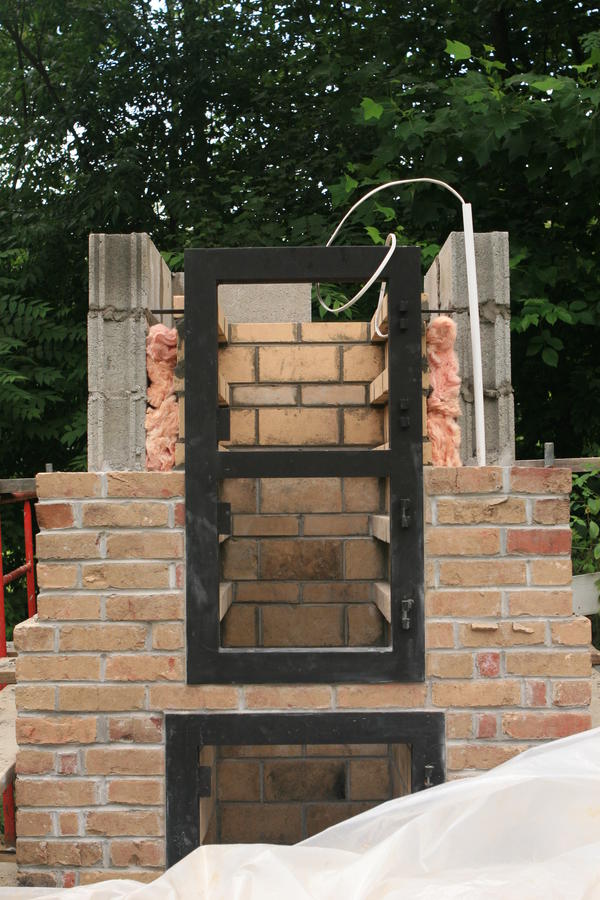You are correct in all aspects of the benefits of adding thermal mass. A double-walled cabinet filled with sand would help the smoker shrug off wind gusts, short-term precipitation, and, to some extent ambient temp swings. More initial thermal energy to stabilize temps, and possibly a bit more throughout the smoke would be noticed, though this would be a more constant rate of consumption once the desired temp is reached. The more mass you add, the more thermal energy release required to heat it up, and slightly more to maintain temps compared to a lighter built cooker.
If I were to use this type of thermal mass for a new build, I would go with a vertical cabinet, wide-body. All three walls and the door with the same density, and possibly the roof as well...and a high temp door gasket as a final touch for added efficiency. If your method of smoke generation could require tending, or refilling a water pan, I would add a drawer or bottom door for access to these levels in the smoke chamber, and use thermal mass in the front of it as well. The extra opening would allow for better heat retention in the smoke chamber during tending.
If you're planning on a charcoal-fired smoker, I suspect that the Minion Method won't get you hot enough without temps running away after you reach your desired cooking temp. You could, however, start with a smaller, hotter fire for start-up, then switch to the Minion method by adding unlit after a period of time. A propane burner would be an easy to use fix as well...just get to temp first, then build your fire and kill the burner...obviously, there would be a learning curve involved with figuring out how much burning vs unlit charcoal to use when you build the fire, if Minion will be your route.
Down-sides? As you hinted about filling the gap with sand after it is in it's final place for use, I would do the same. A 1/2" - 3/4" gap between the walls could take a few hundred pounds of sand to fill, depending on the cabinet dimensions. So, no, it won't be a portable rig at that point, unless you have a sturdy carriage and casters to rest it on. If you figure up about how much thermal mass (weight, in specific) that you want to add, then calculate the volume (on-line calculators are available for conversion by material density over volume), then you calculate the actual gap measurement to use between the walls to get the amount of added mass you want based on surface dimensions of the walls, door, and roof, if you want extra mass there.
The alternative would be to use heavy-gauge steel to achieve the desired thermal mass for the smoke chamber (much more expensive than sand).
Either way, you don't want to have too much thermal mass that requires exorbitant amounts of energy to bring it up to temp, unless your intended fuel will be hardwoods...then, the extra mass helps you to be able to use a hotter fire more effectively to avoid excessive smoke.
Let me know if you need help finding a way to make your calculations for added thermal mass...I'll do some digging and post a link or two, if needed.
Eric
EDIT: I just found your roll-call thread...a couple thoughts came to mind on your smoker build: if you wall-in the smoker with brick or block (smoker built into your outdoor kitchen), leaving a small gap on the side/rear walls of a cabinet smoker as an insulating space, you could just add thermal mass to the door and possibly the roof, then, fore-go the double-wall and thermal mass on the sides and rear of the cabinet. This would give excellent protection from weather, and use a bit less fuel overall. If you designed the structure based on the smoker itself, you could vent from the upper-rear or top (your choice) and cover the entire smoker, except the door(s), and the combustion air inlet port(s). I would advise that you cover the inlet with a metal screen on any permanent installation (bugs and other little critters like to crawl into small spaces where it's nice and cozy), and clean-out of these areas should be considered in the design as well.





